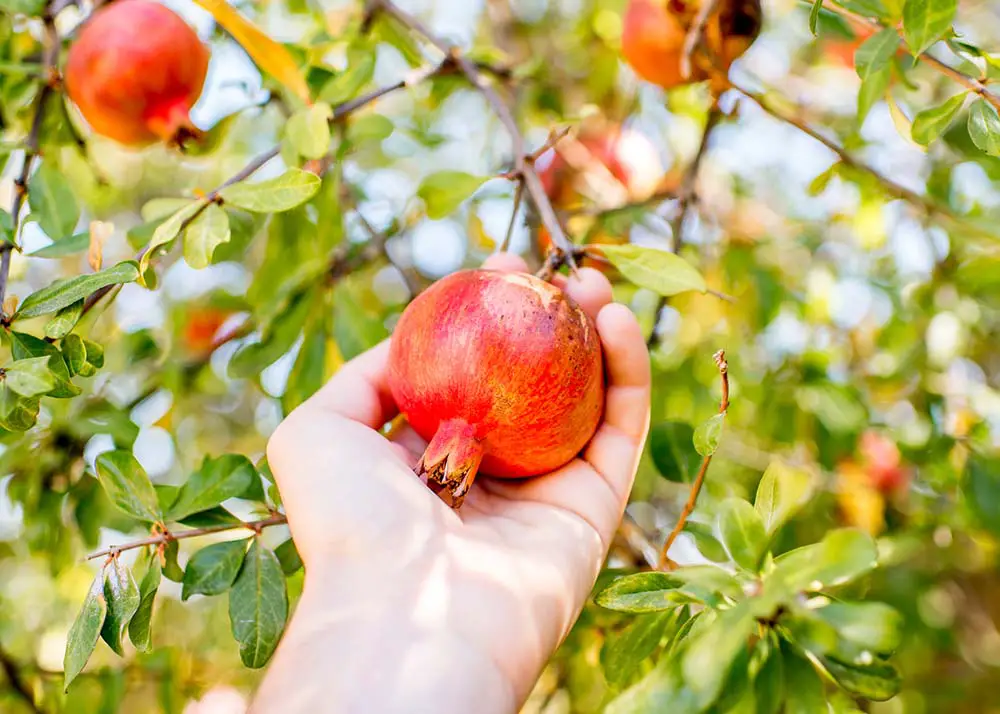
We may receive commissions from purchases made through links in this post, at no additional cost to you.
To me, pomegranates at the grocery store look like piles of perfectly round, red Christmas ornaments. But more often than not, when you crack them open the flavor ranges from dry and puckeringly astringent to sweet and juicy – no doubt because they were harvested all at once for easier shipping.
When it comes to growing your own pomegranates, and you see those “Christmas ornaments” actually hanging on their tree, it can be tricky to know when the fruits are completely ripe. Part of the joy of growing your own fruit is being able to harvest at the peak of flavor. So how do you know when a home-grown pomegranate is ready to harvest?
Pomegranates are ready to pick when they feel heavy for their size, look leathery and matte, and when the sides have flattened and the fruit loses its round shape. It takes pomegranates at least 6 months to mature on the tree, and they are typically ready in the fall between late August and November.
It can be tricky to know exactly when a pomegranate reaches optimum flavor, but there are signs that can help you determine when to harvest. Keep reading to learn about pomegranate tree fruiting habits, signs of ripeness to watch for, and how to correctly harvest fresh pomegranates.
Pomegranate Fruiting Time
Pomegranates take 6 to 7 months to fully mature on the tree. The first step in knowing when to harvest is to pay attention to when the trees blossom in spring. When you notice the first flush of blooms, add six months and mark your calendar (or do what I do and set a phone alarm) for when to start paying attention to signs of ripeness.
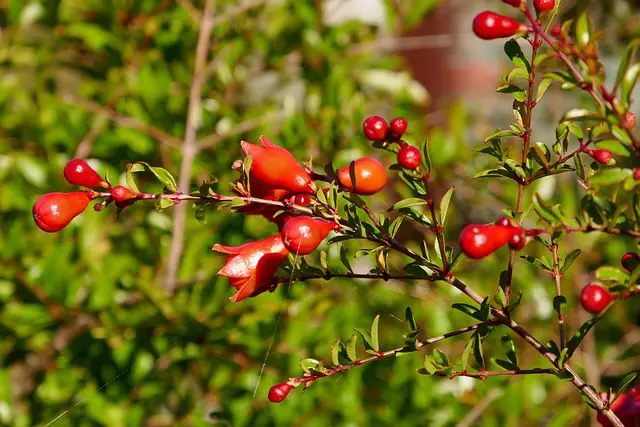
The main blossoming time for pomegranates is mid-to-late spring, but they will continue to send out blooms throughout the growing season. Because of this, not all of the pomegranates will be ready to pick at the same time. Make a habit of checking every few days for ripe fruits.
Most pomegranate varieties ripen in the fall between September and November, although in warmer climates they could be ready for picking as early as late July or August. Commercial pomegranate growers may purposefully harvest their fruit earlier to prevent over-ripe fruits from splitting or cracking, a problem that is common to pomegranate trees.
It’s important to note that pomegranate trees love heat. In areas with warm spring weather and hot summers, the fruit may be ready to harvest much earlier. The same cultivar grown in a cooler climate will take longer to ripen, and the flavor may not be as developed.
Tree Age
A young pomegranate will probably not bear fruit until it has been in the ground for 2 to 3 years. Even then, its first fruit crop may be small or of lesser quality. As the tree matures, it will better be able to support fruit development. Pomegranates will get bigger, better, and will grow more prolifically on a well-established tree.
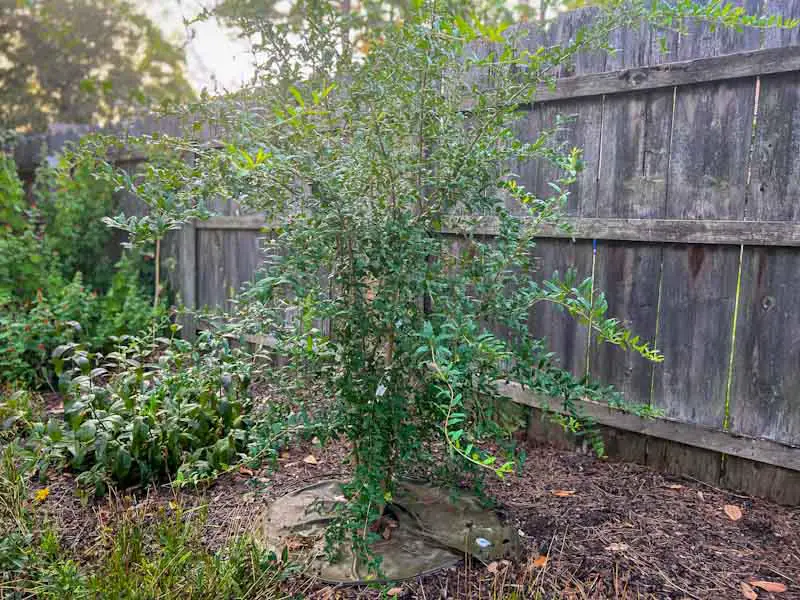
The first 20 years of a pomegranate tree’s life are the most prolific fruiting years. After 20-25 years, fruit production will begin to slow. A pomegranate tree may bear fruit for 30 years or more, but the harvest will get smaller and the quality may suffer.
Signs a Pomegranate is Ready to Pick
It’s notoriously tricky to know when a pomegranate is ripe and ready to harvest. Thankfully, there are several ways to ensure that you pick your fruit when it has its best flavor. The most important signs of pomegranate ripeness are shape, skin appearance, weight, and sound. Other qualities such as fruit color are helpful, but are not reliable indicators on their own.
What Does it Look Like?
- Shape. Young, unripe pomegranates are perfectly round in shape. As the arils inside swell and fill up with juice, the shape of the pomegranate becomes almost hexagonal, with flattened sides. A mature pomegranate will look square or hexagonal, with a flatter top and bottom.
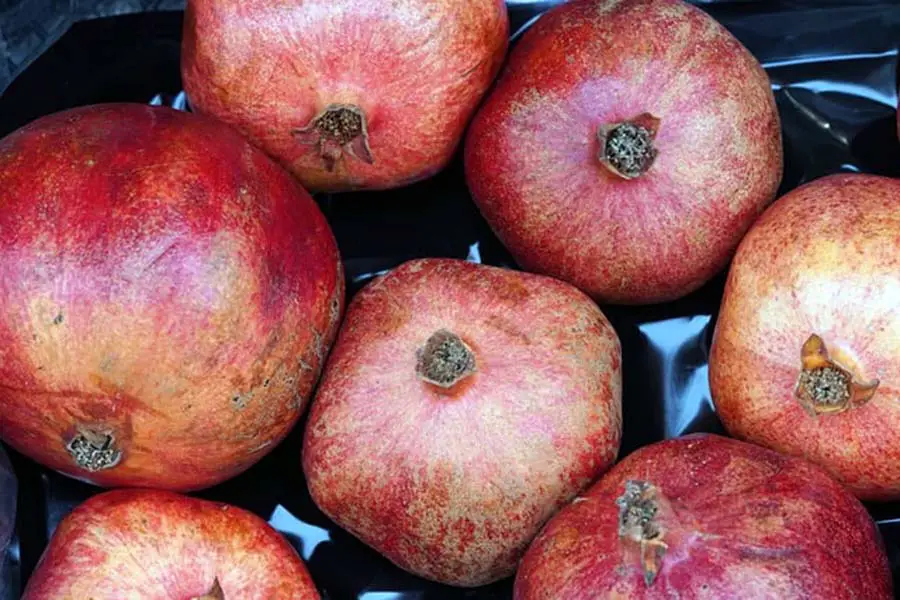
- Skin appearance. The skin of a ripe pomegranate looks rough and matte. Young, unripe pomegranates are smooth and glossy.
- Crown. The crown of the fruit (the little flared, leaflike calyces at the top of the pomegranate) may be turned slightly inward and somewhat shriveled and brown.
- Color. Pomegranates develop their full color long before they are fully ripe, so color on its own is not a reliable sign of ripeness. But color can be a good signal that harvest time is getting closer. Know your pomegranate cultivar, and take note of when the fruits achieve their final color.
What Does it Feel Like?
- Skin texture. A ripe pomegranate’s skin or rind will not only be matte but will also feel leathery. As the inside of the fruit swells and becomes juicier, the skin becomes stretched out and somewhat softened. Unripe pomegranates are smooth and very hard.
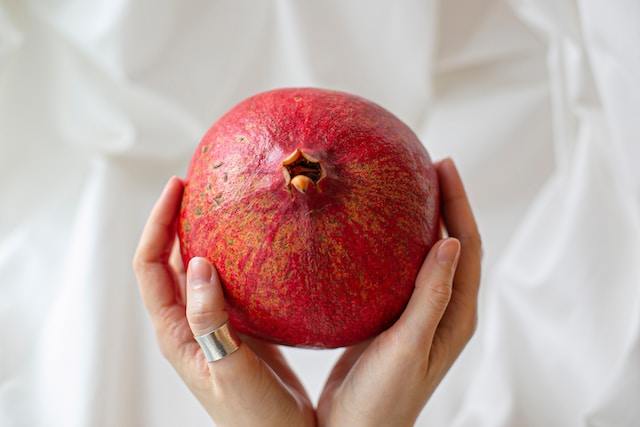
- Scratch test. One way to check for ripeness is to lightly scratch the skin with your fingernail. If it scratches easily, then it’s probably ripe. If the skin is firmer and harder to scratch, the pomegranate isn’t ready yet.
- Weight. A ripe pomegranate will feel heavy for its size. The tree or shrub’s branches will be weighed down and may “weep” somewhat. Many full-grown pomegranates weigh at least half a pound, and some cultivars (like ‘Ambrosia’) may even grow two-pound fruit!
What Does it Sound Like?
- Tap test. A pomegranate that’s ready to pick will have a metallic “ping” sound when lightly tapped with a finger. An unripe fruit sounds dull and hollow.
What Does it Taste Like?
- When in doubt, pull a pomegranate off the tree and try it. For one thing, a ripe pomegranate will pull off the stem relatively easily. If you tug and meet a lot of resistance, it’s probably not ready.
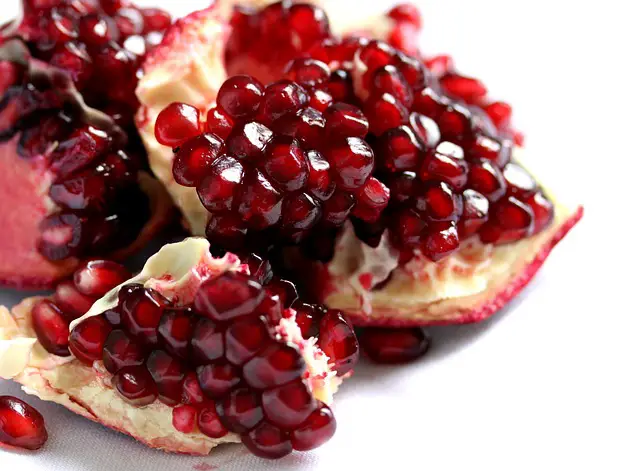
- The juiciness of the seeds (arils) is another indicator of readiness. The ripest pomegranates will have full-to-bursting arils that look crammed into the fruit segments.
- Pomegranates can range in flavor from very tart, to sweet-tart, to very sweet. Check and see what the flavor of your pomegranate is supposed to be. If you are happy with the balance of sweet and tart, then go ahead and pick others that are mature. Pomegranates may have more acidity early in the harvest season, but they will develop more sugar as they sit on the tree.
Other Potential Signs of Ripeness
Some growers say that cracking or splitting of the skin is a sign that pomegranates are ripe. This could be true if the splitting is due to over-ripeness. The pressure of the expanding arils can make the rind of the fruit crack open.
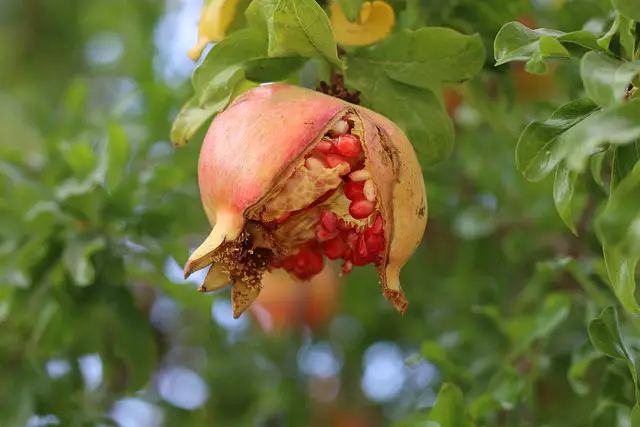
But, there are other reasons for pomegranate fruit split, and it could happen much earlier in the season. I prefer to try and catch the perfect harvest window before the fruits split on the tree.
Similarly, fruits falling on the ground could either be a sign of ripeness, or a sign of another issue. If the fallen pomegranates look okay – as in, no signs of disease/pest damage or rot – then the fruits may just be ready to come off the tree.
Another semi-reliable method is to pay attention to when other creatures begin enjoying your pomegranates. If you notice a few bird pecks in the mature fruit, it may be time to pick. Just try to harvest before the wildlife feeding frenzy gets out of control.
How to Harvest Pomegranates
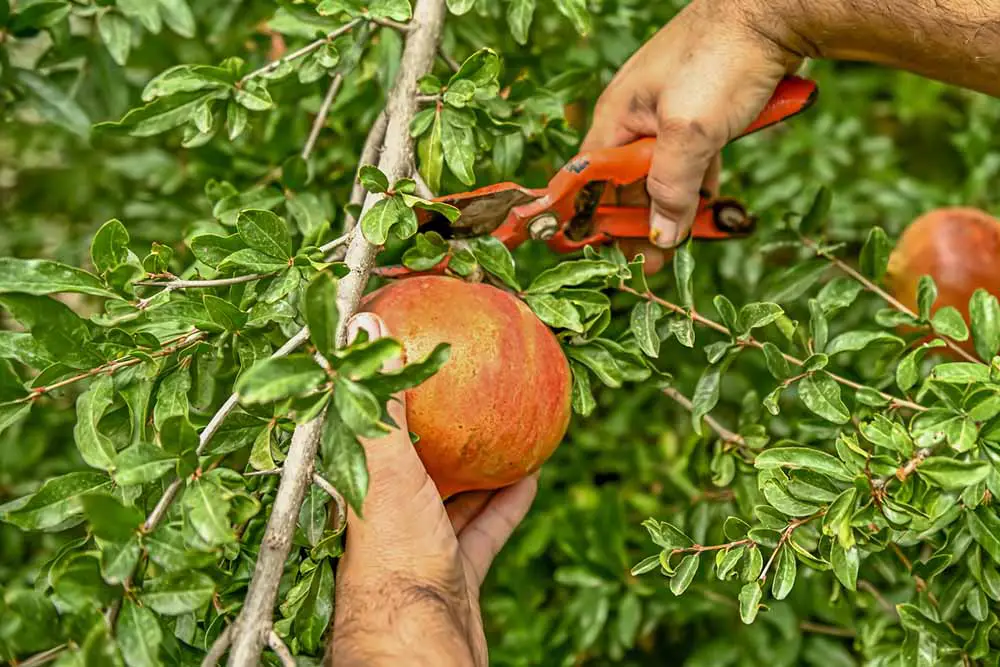
- Use thick gloves and wear long sleeves (I like these thorn-resistant synthetic leather gloves, especially since they still work with touchscreens). Pomegranate trees have prominent thorns, so you’ll want some protection.
- Don’t pull the pomegranates off off the tree. Instead, cut them with sharp, sanitized pruning shears. Clip the stem as close to the fruit as possible.
- Place the pomegranates gently in a basket, box, or tray. Even though the rind is tough, pomegranates can still get bruised or damaged.
- Discard any split fruit, unless you are sure there are no signs of insects or disease (or other creatures snacking on it).
- Check the tree for more ripe pomegranates every few days.
Related: Simple Ways to Clean and Maintain Your Pruning Tools
Other Pomegranate Picking Info
Do pomegranates ripen off the tree?
Pomegranates do not continue to ripen after they are harvested. The sugar/acid content and juiciness stay the same once the fruit is off the tree. Your best bet is to aim to pick at peak ripeness, using all of the tips in this article.
If you leave a pomegranate on the tree too long, it may result in the fruits cracking or splitting wide open. Over-ripe pomegranates also lose some of their pleasing acidity as they sit on the tree. They may become sweeter but overall less flavorful.
What does an over-ripe pomegranate look like?
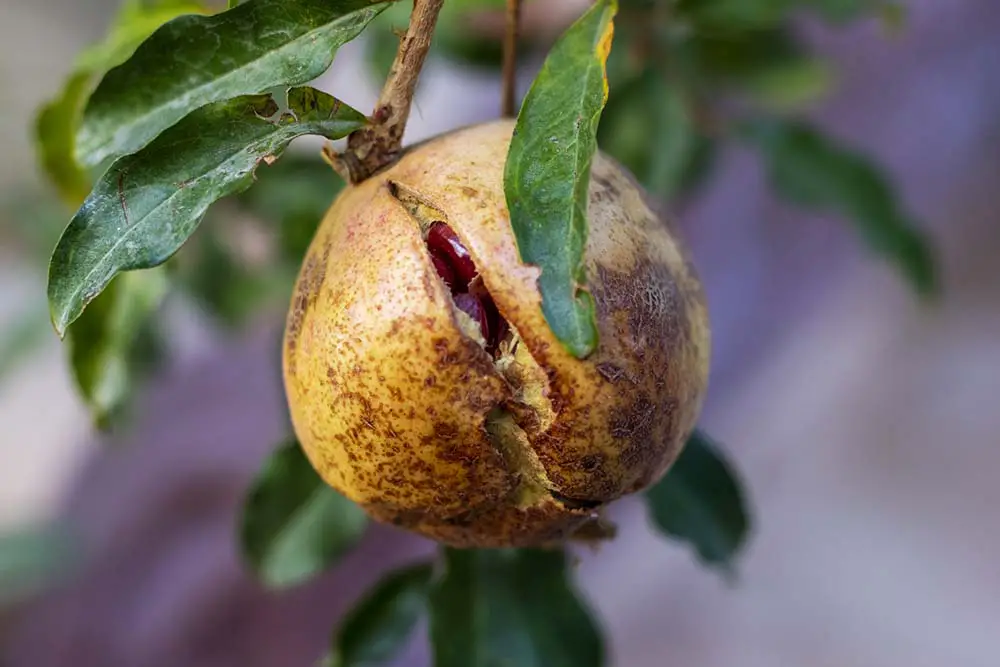
An over-ripe pomegranate may have discoloration and soft spots. It could look wrinkled or deflated, and it will be a bit lighter in weight as the seeds shrivel. When you smell a pomegranate that has been on the tree too long, it may give off a scent of alcohol (if it started fermenting on the tree). Eventually, the arils will begin to rot and the pomegranate will dry out or fall on the ground.
Storing Fresh-Picked Pomegranates
Store your pomegranate harvest in the refrigerator for up to 3 months. Pomegranates left at room temperature should be eaten within 2 weeks.
A great way to store them is to cut them open and harvest the arils. The arils can be stored in the refrigerator for about a week in an airtight container. Or spread the seeds onto a baking tray, freeze, and put in a freezer bag. Store arils in the freezer for up to a year (possibly more).
Frozen pomegranate juice will keep longest in the freezer. It holds onto its color and flavor well when frozen. Pour juice into freezer-safe jars or containers and leave at least 1/2 an inch of headspace so the juice can expand as it freezes.

